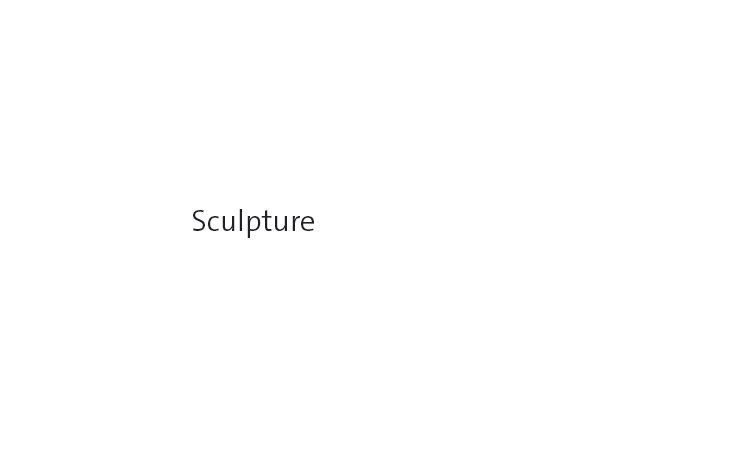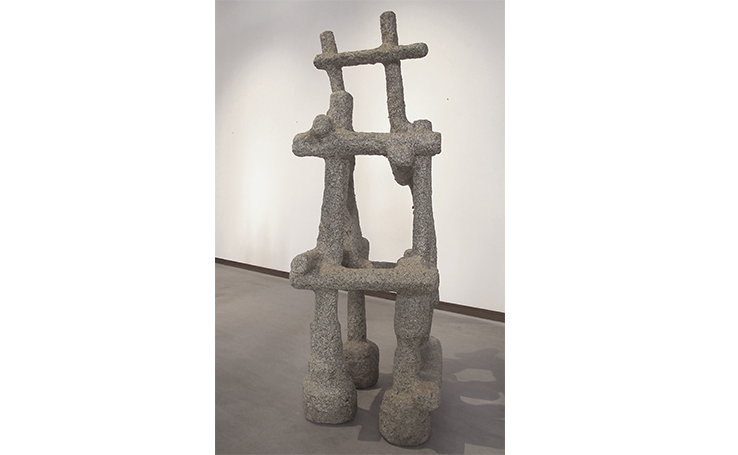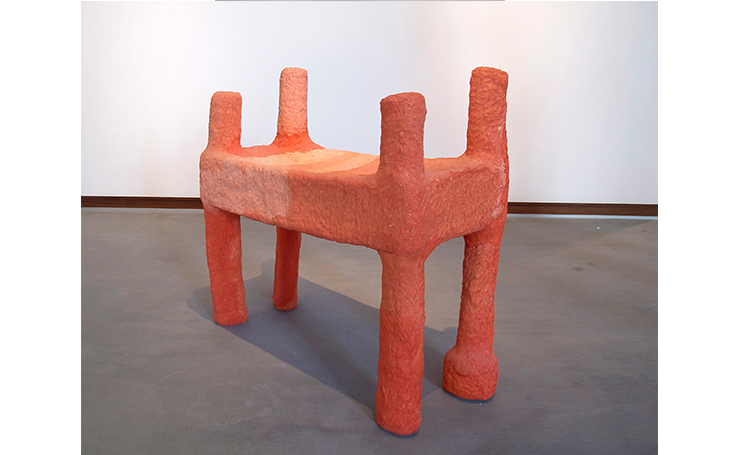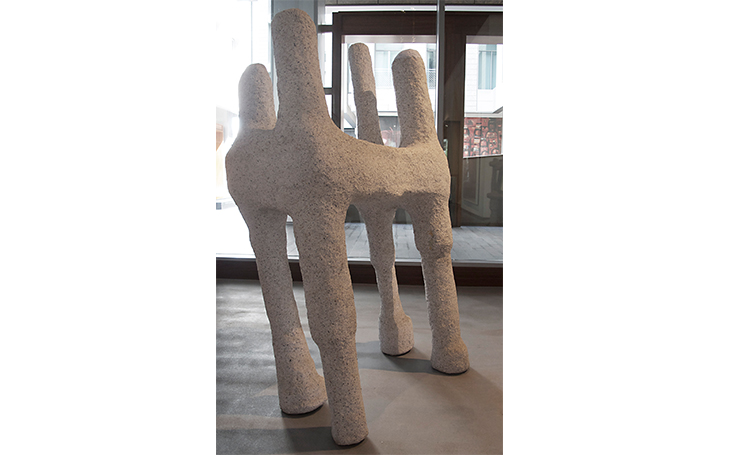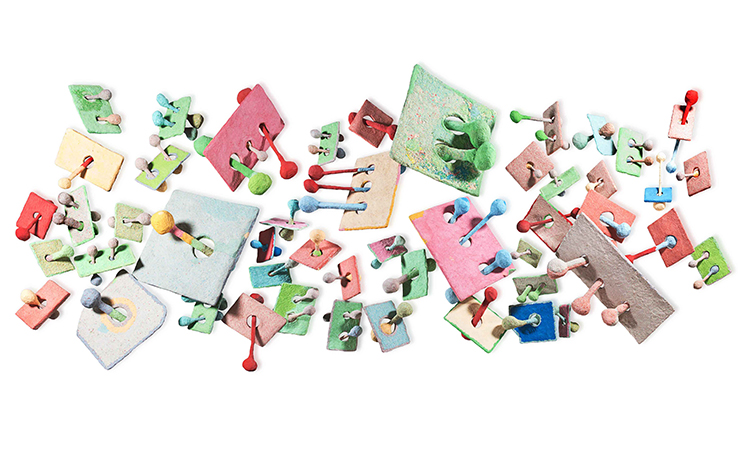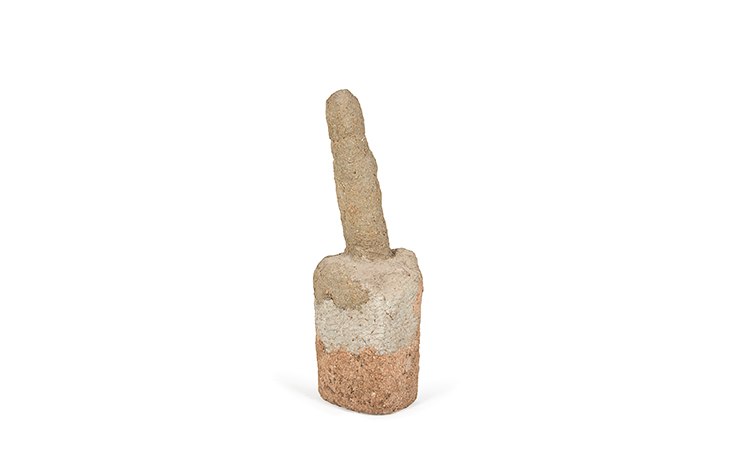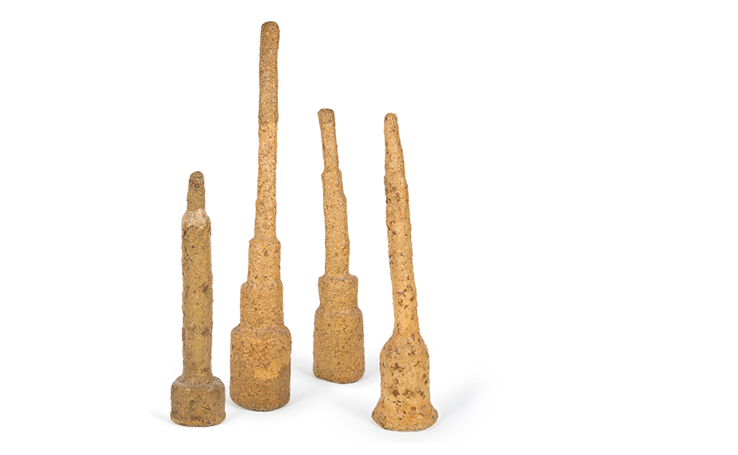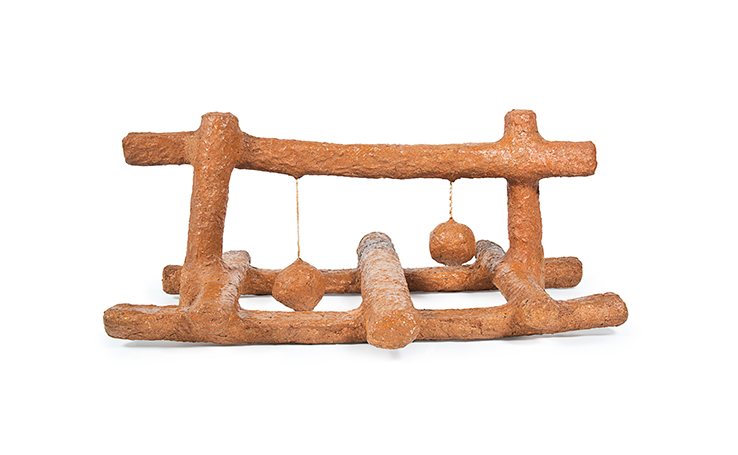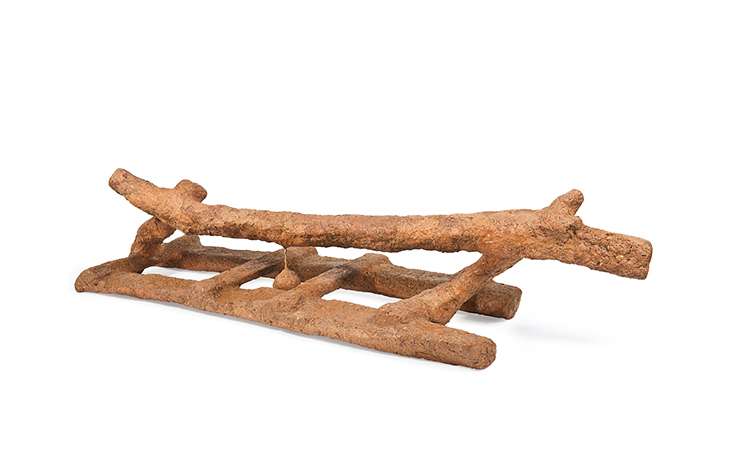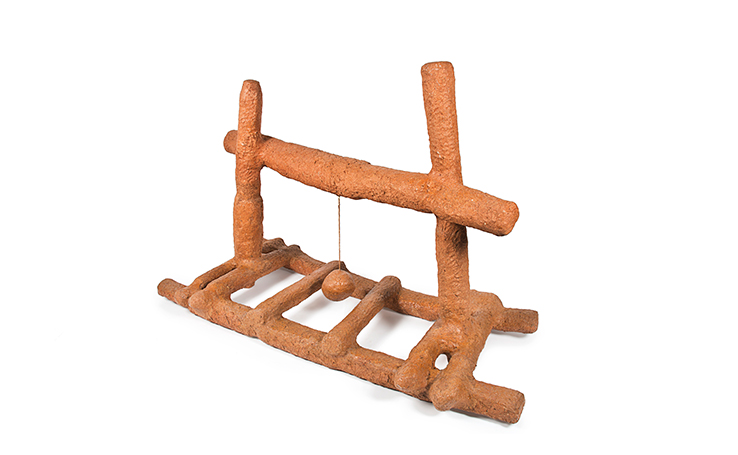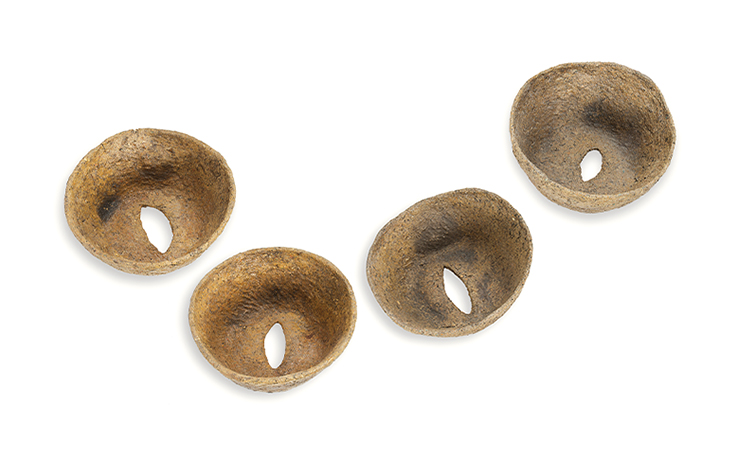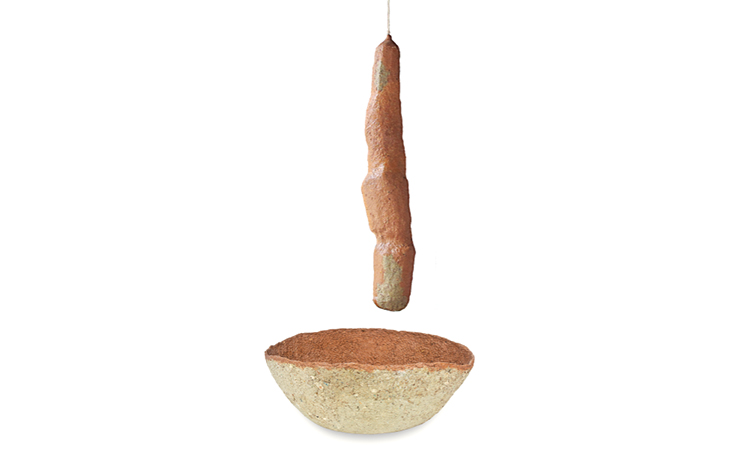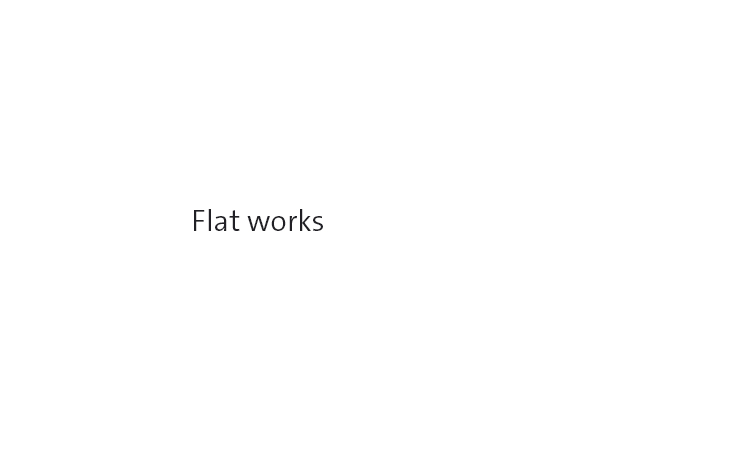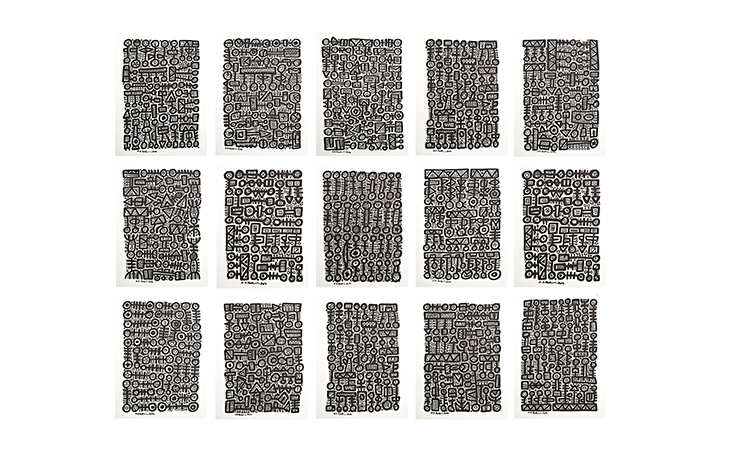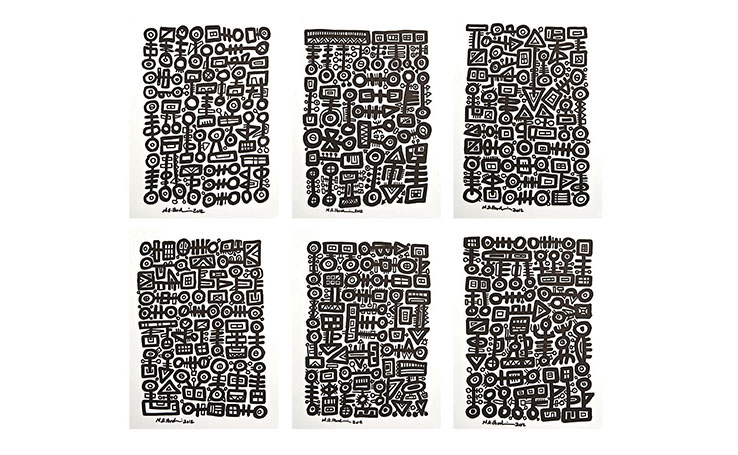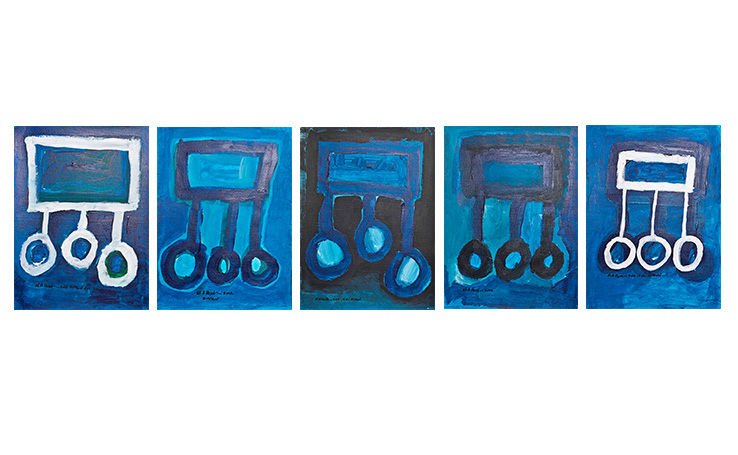
Mohammed Ahmed Ibrahim (1962) was born in Khorfakkan, UAE. He carries a degree in Psychology from Al Ain University, and completed a residency at Le Consortium Art Centre in Dijon, France.
His work has been exhibited internationally, including the Sharjah Biennial in 1993, 1995, 1997, 1999, 2001, 2003 and 2007, the 2009 Venice Biennale, the Kunstmuseum Bonn in 2005, the Sharjah Art Museum in 2005 and 1996, the Dhaka Biennial in 2002 and 1993, Germany’s Ludwig Forum in 2002, the 2000 Havana Biennial, the 1998 Cairo Biennial, the Institut du Monde Arabe in 1998, Holland’s Sittard Art Center in 1995, and Moscow’s 1990 “Exhibition of the Emirates Fine Art Society in the Soviet Union.”
Mohammed Ibrahim received the First Prize for Sculpture at the Sharjah Biennial in 2001 and 1999. His work is in significant collections, including Qatar’s Arab Museum of Modern Art, the Sharjah Art Museum and Holland’s Sittard Art Center.
New Sculpture - Curatorial Statement
“Mostly, I believe an artist doesn’t create something, but is there to sort through, to show, to point out what already exists, to put it into form and sometimes reformulate it.”
Mohammed Ahmed Ibrahim uses unconventional found materials from his native Khorfakkan to create enigmatic sculptures of undefined forms.
In this series, his previous body of work is given an about face. As a land artist, he has painted rocks in the mountains of Korfakkan with primordial signs, and collected stones and bound them together, only to then return them to the remote place where he found them. These works were exposed to weathering in their natural environment. His sculptures, on the other hand, are created from the materials of the local landscape, yet isolated from it in the gallery setting, leaving them as displaced as artifacts or relics in a museum.
Beyond reinforcing the artist’s fascination with the prehistoric, his works shed light on the contemporary disconnect from nature. The artist uses materials such as clay, leaves and wood, which perhaps ought to be regarded as simple and unglamorous. Yet the increased urbanization in the UAE gives these banal items a transformative impact, paradoxically making them appear lofty and rarefied. The sculptures seem organic, as though they were natural forms that he has illuminated, rather than created. Indiscernible, they carry vague impressions of recognizable objects – bird feeders, fishing traps, totemic monuments, even limbs.
The seemingly weighty and imposing constructions are in fact fragile and ephemeral, susceptible to wear and weathering. Human intervention on nature is evident in Mohammed Ibrahim’s narrative. Equally powerful, however, is his notion that nature often intervenes to disrupt human creation. “Art is motion,” the artist states, eloquently encapsulating this reciprocity.












